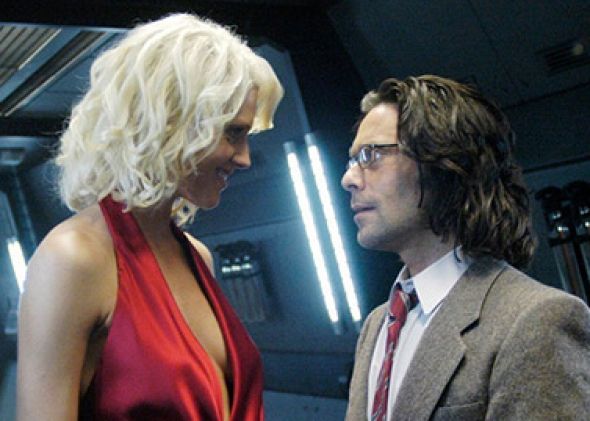Rex Troumbley — Slate

This essay originally appeared in Internet Monitor 2013: Reflections on the Digital World, published by the Internet Monitor project at Harvard’s Berkman Center for Internet & Society. It is licensed under a Creative Commons Attribution 3.0 Unported license and has been lightly edited to align with Slate’s style guide.
On June 30, 2013, prompted by revelations of surveillance programs in the United States and United Kingdom, former Union of International Associations Assistant Secretary-General Anthony Judge published a detailed proposal titled “Circumventing Invasive Internet Surveillance With Carrier Pigeons.” In it, Judge discusses the proven competence of carrier pigeons for delivering messages, their non-military and military messaging capacity, and Chinese experiments to create pigeon cyborgs. Judge acknowledges that pigeon networks have their own vulnerability (such as disease, hawks, or being lured off course by sexy decoys), but argues that others have proven pigeons are effective at transmitting digital data.
Bitcoin paradise
Posted in bitcoin, economics, geopolitics, government, human trajectories
by J.M.P. — The Economist

A GROUP of self-described anarchists, libertarians and Ron Paul supporters fleeing the crumbling world economic system have founded Galt’s Gulch, a community in Chile inspired by Ayn Rand’s “Atlas Shrugged”—and with an economy based entirely on Bitcoin. Or that’s the goal, anyway.
“Our farm workers and suppliers still want to get paid in pesos,” Ken Johnson, the project’s founder and managing partner, explains. “But Bitcoin as the John Galt coin? Why shouldn’t it be?”
If the world economic system “goes sideways,” as Mr Johnson puts it, residents will retreat to their self-sufficient gated community, where they will enjoy a shooting range, equestrian facilities, and spa and fitness center. The 6,874-hectare site (pictured) also includes a 100-hectare farm, although it is not clear who will pick the lettuce when the world ends.
 To think about the existential prospects that lie ahead for Humanity 2.0, or Homo futura, imagine yourself in 1900 faced with two investment opportunities for the future of personal human transport: on the one hand, a specially bred – that is, genetically modified – horse; on the other, a mass-produced automobile. Which prospect would you pursue?
To think about the existential prospects that lie ahead for Humanity 2.0, or Homo futura, imagine yourself in 1900 faced with two investment opportunities for the future of personal human transport: on the one hand, a specially bred – that is, genetically modified – horse; on the other, a mass-produced automobile. Which prospect would you pursue?
The horse has been long a reliable mode of transport, whose strengths and weaknesses are well known. A faster horse may require greater skill to handle and more feed that produces more manure. But your society is already equipped to deal with those consequences. In contrast, the automobile is a new technology, albeit one that has already shown that it can equal and even surpass the horse in terms of speed and durability under a variety of conditions. However, the automobile brings its own distinctive cost-benefit calculus, as its future improvement would very likely involve both greater enclosure of the traveller and greater pollution of the environment. In the long term, the traveller’s relationship to nature would probably need to change quite drastically for the automobile to become dominant.
It is too bad that the state of genetic knowledge was not sufficiently advanced in 1900 to turn this into a real choice. Instead the horse easily appeared a less attractive long-term bet, as it was generally presumed that the upper limits of the creature’s performance had been already reached. In that case, the indefinite continuation of horse-drawn personal transport could only be defended by those who had a principled objection to mechanical transport, a position perhaps grounded in a nostalgic view of humanity’s oneness with nature. But even these people could not deny the proven effectiveness of ships and trains as machines of mass conveyance. In short, the horse was doomed. The market for personal transport underwent what Joseph Schumpeter called ‘creative destruction’. Henry Ford effectively made it worthwhile for consumers to reorganize their value priorities in a way that quickly resulted in the automobile, rather than the horse, setting the standard of personal transport.
The twenty-first century may offer us a choice rather like that of our hypothetical 1900 decision between horse and car. But now the choice would be between two different ways of continuing the human condition – alternative vehicles, as it were, to convey our existence. One involves genetically modifying ourselves and the other involves transcending the bodies of our birth altogether. These two options represent the two rather opposing directions in which contemporary transhumanism is heading.
In most general terms, ‘transhumanism’ says that the indefinite projection of our most distinctly human qualities is worth pursuing as a value in its own right – even if that means radically altering our material nature. This definition of transhumanism captures by implication all of those who might be against such a movement, not least those – typically ‘Greens’ – who believe that humanity’s current global crises stem from our attempts to minimize if not deny our commonality with the rest of nature.
The word ‘transhumanism’ was coined by Julian Huxley, a founder of the dominant research paradigm in biology today, which integrates Darwin’s account of natural history with the experimental principles of modern lab-based genetics. Huxley, following the lead of his grandfather, Thomas Henry Huxley, believed that Darwin fundamentally challenged anyone who wanted to uphold the superiority of Homo sapiens as a species. After all, the workings of natural selection suggest that all forms of life are limited by their largely innate capacities to adapt to a changing environment. In the end, any given species – including humans — should expect extinction, not immortality. From that standpoint, all the promises made by Christianity and Islam of an eternal ‘afterlife’ looked empty. Nevertheless, the Huxleys believed that there was something fundamentally correct about these religious intuitions.
Thomas Henry Huxley opposed those who held that ethics could be straightforwardly inferred from evolutionary history. On the contrary, he argued, we humans are unique in our capacity to push back, and ideally reverse, natural selection. He had in mind modern developments in law and medicine that effectively institutionalise forms of life that take humanity far from its Darwinian default settings. Thus, our conception of justice is more complex than ‘an eye for an eye’ and our interest in health goes beyond simply enabling people to cope with whatever life throws in their way. In this respect, modern society has been built to promote a progressive world-view, in which death becomes the ultimate enemy — not the ultimate resolution — of life.
Julian Huxley, equipped with a better scientific understanding, went one step further to argue that Homo sapiens is the only species equipped to comprehend the entire evolutionary process, in which case we incur a unique moral obligation to administer and direct its future course. This is the context in which ‘transhumanism’ was coined.
But even accepting humanity’s sense of cosmic responsibility still leaves us with many questions about how to proceed. Julian Huxley was himself a eugenicist who helped several biologists working in Nazi Germany, including the great ethologist Konrad Lorenz, to avoid charges of ‘crimes against humanity’ at the Nuremberg Trials. Huxley was also the principal author of UNESCO’s 1950 ‘Statement on Race’, which argued that the idea of fixed racial distinctions lacks a firm foundation in biological science. Taken together, these interventions suggest a deep acceptance of humanity’s adaptability and plasticity, in which the future should not be seen as a simple repetition of the past. Huxley supported eugenics not to reinforce long-standing racial prejudice but, on the contrary, to experiment with humanity’s untapped potential to surpass its current levels of achievement.
Whatever one makes of Huxley’s own enthusiasm for eugenics, which remained up to his death in 1975, it is clear that his existential horizons were rather limited by the standards of today’s transhumanists. For Huxley, humanity’s room for manoeuvre, while considerable, was ultimately confined to our evolutionary heritage in carbon. He envisaged altering and otherwise enhancing our genetic capacities, but not uploading our minds into silicon chips that would allow us to be resurrected as freestanding avatars. In this respect, Huxley is like our hypothetical 1900 entrepreneur investing in the idea of a genetically modified horse as the future of personal transport.
This means that the Henry Fords of our transhuman future are those who see our carbon-based bodies simply platforms for the realization of a set of ‘functionalities’ that may be more powerfully and more efficiently realized in another medium altogether. The original Henry Ford reckoned that while people may find it nice to be one with nature, at the end of the day what really mattered was how to get where you want to go as quickly as possible. Similarly, today’s silicon-based transhumanists regard our genetically endowed bodies as simply means to ends that in the future may be performed more effectively by some other means.
To be sure, relatively few share Ray Kurzweil’s dream that by 2050 human consciousness will be successfully uploaded into a computer that enables us to conceptualise and experience the world as if we were still carbon-based creatures. Nevertheless, as the saying goes, people are already ‘voting with their feet’. The amount of quality time spent on the internet suggests that people are beginning to locate the meaning of their lives more in virtual than actual reality. Of course, that tendency by itself does not guarantee that we shall realize Kurzweil’s dream. But it does provide an incentive for investment into research that might eventually realize it. The power of faith to overcome material obstacles should never be underestimated, especially when the believers are armed with science.
The ease with which Homo sapiens has managed to remake itself and the physical environment over a few thousand years – in many cases, undoing the work of billions of years of evolution – has been a source of great fear, but also of great hope. That hope involves a vision of human history in which after emerging as a distinct branch of the tree of life, our biology serves as a platform for launching a range of technologies that extend our natural capacities and with which we eventually merge to constitute the executive control centre of an ever expanding portion of the universe.
This is a world that Darwin did not envisage because, like so many other 19th century biologists, he could not imagine that the basic elements of life were governed by mathematical principles, let alone a ‘genetic code’. Indeed, Darwin’s contemporary, the man who we now consider the father of modern genetics, Gregor Mendel, was largely ignored in his lifetime precisely because he claimed to have found such principles. However, the molecular revolution in genetics that began in earnest with the discovery of DNA’s function in 1953 has increasingly brought together the expertises of computer scientists and molecular geneticists in quite literal projects of ‘bioengineering’, whereby life is built according to a mathematically specified plan from basic materials.
Regardless of whether humanity continues to believe that its progress is ultimately circumscribed by its biology, transhumanism’s own progress in the general culture may be measured by the extent to which ‘nature’ is seen not as imposing a limit on the human will, but rather as raw material, untapped potential or even capital that we might leverage into new and improved states of being. To be sure, there is no reason to think that such beliefs are self-fulfilling but they do foster a climate in which people are willing to take more risks with themselves, other people and the world at large.
Further Reading
Church, G. and Regis, F. (2012). Regenesis: How Synthetic Biology Will Reinvent Nature and Ourselves. New York: Basic Books.
Fuller, S. (2011). Humanity 2.0: What It Means to Be Human Past, Present and Future. London: Palgrave Macmillan.
Fuller, S. (2013). Preparing for Life in Humanity 2.0. London: Palgrave Macmillan.
Fuller, S. and Lipinska, V. (2014). The Proactionary Imperative: A Foundation for Transhumanism. London: Palgrave Macmillan.
More, M. and Vita-More, N., eds. (2013). The Transhumanist Reader. London: Wiley-Blackwell.
By Lucas Mearian — Computerworld
Computerworld - Approximately 18 people die every day waiting for an organ transplant. But that may change someday sooner than you think — thanks to 3D printing.
Advances in the 3D printing of human tissue have moved fast enough that San Diego-based bio-printing company Organovo now expects to unveil the world’s first printed organ — a human liver — next year.
Like other forms of 3D printing, bio-printing lays down layer after layer of material — in this case, live cells — to form a solid physical entity — in this case, human tissue. The major stumbling block in creating tissue continues to be manufacturing the vascular system needed to provide it with life-sustaining oxygen and nutrients.
Written By: Cameron Scott — Singularity Hub

Medicine is more an art than a science, doctors are the first to admit, not just because so much remains unknown about the human body, but also because patients often fail to provide relevant details or follow the doctor’s orders. Which explains the strong appeal of digitizing pills so that they register when the patient takes them and including Internet-enabled medical sensors in medical devices.
But how can we safely power electronic technology inside the body? A number of researchers are aggressively seeking answers to that question. For instance, Singularity Hub has covered an electronic pill that, when activated by stomach acid, generates enough power to signal an external device that then registers that the pill has been taken.
Carnegie Mellon biomedical engineer Christopher Bettinger argues that flexible biodegradable batteries safe for human consumption would help implants achieve maximum benefits.
Zoltan Istvan — Huffington Post Visionary; Philosopher; Author of bestselling novel ‘The Transhumanist Wager’
For a few billion people around the world, Christmas is the most important and relished holiday of the year. It’s the day with the most gift-giving, the most family get-togethers, the most religious activities, and the most colorful fairy tales that children and adults almost universally embrace with sacred fervor. For many nations, no other day comes close to being as special. For this reason, it seems almost unimaginable that another day — especially an unknown one looming on the horizon — will soon unseat Christmas as the most important day in the world. Nonetheless, for humanity, the course is set. The birth of an artificial intelligence equal or greater than that of human intelligence is coming. It’s called AI Day. And once it arrives, it will rapidly usher in a new age.
For decades, the concept of a man-made intelligence matching or surpassing our own — technically called AGI (artificial general intelligence) or Strong AI — has been steeped in science fiction. Upon hearing the term AI, many people immediately think of the sentient computer HAL in Stanley Kubrick’s masterpiece film 2001: A Space Odyssey. However, what most people fail to grasp is that once AI becomes self-aware and joins with the internet, it could grow its intelligence thousands of times in just mere days, perhaps hours. Frankly, it could quickly surpass all measurements of intelligence that humans are even capable of monitoring and recognizing.
“I think that Ray Kurzweil’s estimate that we will achieve human-level Artificial General Intelligence by around 2029 is a reasonable guesstimate,” says Dr. Ben Goertzel.
 , thinks he is making history. On Saturday, his restaurant Kolonial announced that its patrons can pay in bitcoins instead of rupees, thus laying claim to the title of being India’s first eatery to accept the new-age currency. “Right now, people are a bit sceptical about bitcoins, but it’s going to become big. I am testing the waters,” said Thadani, 30, who is a bitcoin owner and a host to several bitcoin meetups at Kolonial.
, thinks he is making history. On Saturday, his restaurant Kolonial announced that its patrons can pay in bitcoins instead of rupees, thus laying claim to the title of being India’s first eatery to accept the new-age currency. “Right now, people are a bit sceptical about bitcoins, but it’s going to become big. I am testing the waters,” said Thadani, 30, who is a bitcoin owner and a host to several bitcoin meetups at Kolonial.The Happiest Thought of Einstein’s Life is even Happier (A Christmas Carol)
Otto E. Rossler, Faculty of Science, University of Tübingen, Auf der Morgenstelle 8, 72076 Tübingen, Germany
Abstract
Einstein’s happiest thought as he always said – weightlessness in free fall and hence usefulness of an imaginary rocketship for understanding gravity – has further implications if you look at it with the full attention of a child. Beside clock rate, size and mass and charge are miraculously transformed along, as every PET san confirms.
(December 24, 2013)
You are alone in outer space in a long-long rocketship with its neverstopping noiseless engine. A beamer at the bottom sends a steady laser beam up to you at the tip. The light then arrives at you with a longer spacing in between its wave crests. For while it travelled up at its constant speed, the tip along with you picked up speed relative to the emission point. So the wave crests reach you with a longer spacing.
This is the famous fairy-like tale of the “gravitational redshift” envisioned by Einstein which every child learns about in school. And the GPS satellites in the sky confirm it every day – that our terrestrial clocks, ultimately based on the counting of light’s wave crests, tick slower down here. Twinkle, twinkle little star – you twinkle different where we are.
The wave crests generated down here where we are are wider-spaced, not only in time but also in space. For light of a longer temporal wavelength also has a proportionally elongated spatial wavelength. Hence we are also taller down here than the people in the space station are, and broader. Since the emporal and the spatial spacings are increased in parallel, the ratio space over time – the speed of light – is a global and not just a local constant.
Not so for the adults. They claim that the spatial wavelengths are not increased. This is something you have to believe us, they say, because we are the grownups. Yet on one special day of the year, the children are taken seriously when they are asking the “why?”-question. And, lo and behold, the adults start stuttering. Einstein fell silent on the topic of gravity for more than three years when seeing no way to rescue the global constancy of the speed of light c – because Schwinger’s quantum electrodynamics still lay in the distant future. Schwinger says implicitly that the slowed-down clocks have a so much lower mass owing to the interconvertibility of light and particles. This makes all objects as much larger downstairs as their clocks tick are slower. Hence the adults are wrong for once and Einstein’s sadness about the smudge fallen on his happiest thought was unnecessary since the smudge is gone. Every PET scan proves this to the eye because it works on sea level as well as in the Himalayas, with the more energetic photons high up and with the less energetic photons (and equivalent positron masses) below. All trained adults will confirm this to you. Therefore, you better not listen to them when they add: “But since we learned that c is no longer global, we cannot but remain loyal to that teaching.”
Why did I tell you the heart-warming story of the global c to date? It is because the adults need help from the children for once. The speed of light suddenly is no longer different on earth and in the satellite that you see glare in the evening sun. So everything has become simple again. Only Momo’s people in the gray suits have learned to live with the smudge on the shining constancy of the speed of light c discovered by the youthful Einstein. To them, a return to the original happiness of his most important thought appears blocked forever.
Light – Akhenaton’s light – is a revelation still, with its universal speed added to its shining majesty after more than three millennia by the young Einstein. That speed is given to each individual person as a private possession. This mysterious present now stands there anew in its undiminished glory. The happiest thought of a single person turns out to have been so unimaginably happy that even the discoverer was too modest to believe so during his lifetime. Now, on this Christmas day, we got the full mystery back.
For J.O.R.
By Miles Brundage — Slate

Ten years ago this month, a reimagined version of the ’70s science fiction series Battlestar Galactica began as a three-hour miniseries on the Sci-Fi Channel. (This was before the “Syfy” nonsense.) The critically acclaimed show ended up running for four seasons. Many articles and books have already been written about the enduring relevance of Battlestar Galactica’s religious and political themes—at least one of which, the dilemmas associated with a secretive national security state, is just as timely today as it was during the Bush administration.
But another key element of the show—the long-term societal risks associated with the development of intelligent machines—is even more relevant today than it was in 2003.
